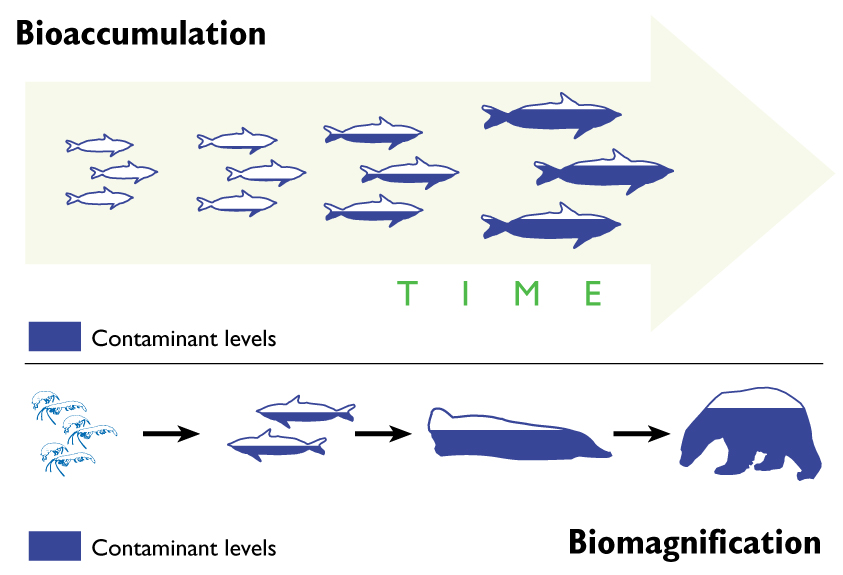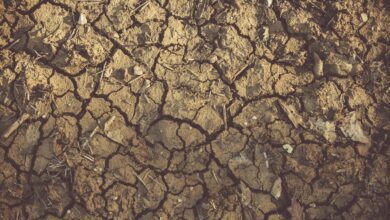Understanding the Difference: Bioaccumulation vs Biomagnification

Bioaccumulation vs Biomagnification
Bioaccumulation and biomagnification are two distinct yet interconnected ecological processes that have significant implications for the health of our environment and the organisms within it. Understanding the nuances between these two terms is crucial for effectively managing and mitigating the risks associated with the accumulation of harmful substances in living organisms.
In this comprehensive article, we will delve into the definitions, causes, and impacts of bioaccumulation and biomagnification, exploring the similarities and differences between these phenomena. By the end of this piece, you will have a deeper understanding of these crucial environmental concepts and the steps that can be taken to address them.
What is Bioaccumulation?
Bioaccumulation is the process by which a substance, such as a chemical or a heavy metal, accumulates within the tissues of a living organism over time. This occurs when the organism’s intake of the substance exceeds its ability to metabolize or excrete it, leading to a gradual buildup of the substance within the organism’s body.
Causes and Sources of Bioaccumulation
Bioaccumulation can occur through various routes, including:
- Direct exposure: Organisms can absorb substances directly from their surrounding environment, such as water, soil, or air.
- Dietary intake: Organisms can consume contaminated food sources, leading to the accumulation of substances within their bodies.
- Biomagnification: The process of biomagnification, which will be discussed in-depth later, can contribute to the bioaccumulation of certain substances in higher trophic levels of the food chain.
The sources of bioaccumulative substances can vary and may include industrial pollutants, pesticides, heavy metals, and persistent organic pollutants (POPs).
Also read: The Hidden Dangers of Thermal Pollution
Examples of Bioaccumulative Substances
Some well-known examples of bioaccumulative substances include:
- Mercury: A highly toxic heavy metal that can accumulate in the tissues of fish and other aquatic organisms.
- Polychlorinated biphenyls (PCBs): Persistent organic pollutants that were once widely used in industrial applications and can bioaccumulate in the food chain.
- Dioxins: Highly toxic compounds that can bioaccumulate in the fatty tissues of animals and humans.
Impacts of Bioaccumulation on Ecosystems and Human Health
Bioaccumulation can have far-reaching consequences for both ecosystems and human health. As substances accumulate in the tissues of organisms, they can:
- Disrupt the normal physiological functions of the affected organisms.
- Compromise the reproductive success and overall fitness of the organisms.
- Magnify the concentration of the substances as they move up the food chain, leading to increased exposure and potential health risks for higher-level consumers, including humans.
- Contribute to the degradation of ecosystem health and biodiversity.
What is Biomagnification?

Biomagnification, also known as bioamplification or trophic magnification, is the process by which the concentration of a substance increases as it moves up the food chain. This phenomenon occurs when organisms at higher trophic levels consume organisms at lower trophic levels that have accumulated the substance, resulting in a higher concentration of the substance in the tissues of the predator.
Factors Influencing Biomagnification
Biomagnification is influenced by several factors, including:
- Persistence: The ability of a substance to resist degradation and remain in the environment for an extended period.
- Lipophilicity: The tendency of a substance to accumulate in the fatty tissues of organisms.
- Bioavailability: The degree to which a substance is available for uptake and absorption by living organisms.
- Trophic level: The position of an organism within the food chain, with higher trophic levels generally experiencing greater biomagnification.
Examples of Biomagnification in Food Chains
One of the most well-known examples of biomagnification is the case of DDT (dichlorodiphenyltrichloroethane), a once widely used insecticide. As DDT moved up the food chain, from plankton to small fish to larger predators, its concentration increased dramatically, leading to severe declines in populations of birds of prey, such as bald eagles and peregrine falcons.
Another example is the biomagnification of mercury in aquatic food chains. Mercury can be converted into its more toxic form, methylmercury, by microorganisms in aquatic environments. As methylmercury moves up the food chain, from plankton to small fish to larger predatory fish, its concentration can increase by several orders of magnitude, posing a significant health risk to humans and wildlife that consume these contaminated fish.
Also read: The Detrimental Effects of Environmental Pollution
Effects of Biomagnification on Wildlife and Human Health

The effects of biomagnification can be devastating for wildlife and human health. As the concentration of a substance increases in the tissues of organisms at higher trophic levels, it can:
- Cause reproductive impairment, developmental abnormalities, and other physiological issues in affected organisms.
- Disrupt the balance and functioning of entire ecosystems, leading to cascading effects on biodiversity and ecosystem services.
- Pose a significant health risk to humans who consume contaminated wildlife or fish, potentially leading to neurological, reproductive, or other health problems.
Bioaccumulation vs. Biomagnification: Similarities and Differences
While bioaccumulation and biomagnification are closely related processes, there are some key differences between them:
| Bioaccumulation | Biomagnification |
|---|---|
| Refers to the accumulation of a substance within an individual organism over time | Refers to the increase in the concentration of a substance as it moves up the food chain |
| Occurs through direct exposure or dietary intake | Occurs as a result of the consumption of contaminated prey by predators |
| Can happen at any trophic level | Typically occurs at higher trophic levels |
| Depends on the organism’s ability to metabolize or excrete the substance | Depends on the persistence and lipophilicity of the substance, as well as the trophic structure of the food chain |
| Can lead to high concentrations in individual organisms | Can lead to exponential increases in concentration at higher trophic levels |
Understanding the distinctions between bioaccumulation and biomagnification is crucial for developing effective strategies to mitigate the risks associated with the accumulation of harmful substances in the environment.
Importance of Understanding Bioaccumulation vs Biomagnification
The understanding of bioaccumulation and biomagnification is essential for several reasons:
- Environmental monitoring and risk assessment: By identifying bioaccumulative and biomagnifying substances, regulatory agencies and environmental organizations can develop targeted monitoring programs and risk assessment frameworks to protect ecosystems and human health.
- Ecosystem management: Knowledge of these processes can inform the development of policies and management strategies to limit the introduction and spread of harmful substances in the environment.
- Human health protection: Recognizing the potential for bioaccumulation and biomagnification in the food chain can help guide public health advisories and regulations to ensure the safety of seafood and other wildlife consumed by humans.
- Scientific research: Continued study of bioaccumulation and biomagnification can lead to a better understanding of the complex interactions within food webs and the long-term impacts of environmental contamination.
Measures to Mitigate Bioaccumulation vs Biomagnification
To address the challenges posed by bioaccumulation and biomagnification, a multifaceted approach is required, involving a combination of regulatory, technological, and behavioral measures:
- Regulatory measures:
- Establishing limits and restrictions on the production, use, and disposal of bioaccumulative and biomagnifying substances.
- Implementing strict environmental regulations and enforcement mechanisms to reduce the release of these substances into the environment.
- Promoting the development and adoption of alternative, less harmful substances and technologies.
- Technological measures:
- Investing in the development and deployment of advanced wastewater treatment technologies to remove bioaccumulative and biomagnifying substances from effluents.
- Promoting the use of green chemistry principles in the design and manufacture of new chemicals and products.
- Encouraging the development of effective remediation and cleanup technologies for contaminated environments.
- Behavioral measures:
- Educating the public, industry, and policymakers about the risks of bioaccumulation and biomagnification.
- Promoting sustainable consumption and production practices to reduce the demand for and use of bioaccumulative and biomagnifying substances.
- Encouraging the adoption of environmentally responsible practices, such as proper waste disposal and the use of eco-friendly alternatives.
By implementing a combination of these measures, we can work towards mitigating the adverse impacts of bioaccumulation and biomagnification on our ecosystems and human health.
Conclusion
Bioaccumulation and biomagnification are complex and interconnected processes that have significant implications for the health of our environment and the organisms that inhabit it. Understanding the nuances between these two phenomena is crucial for developing effective strategies to manage and mitigate the risks associated with the accumulation of harmful substances in living organisms.




